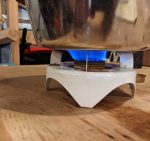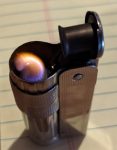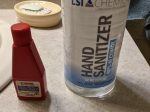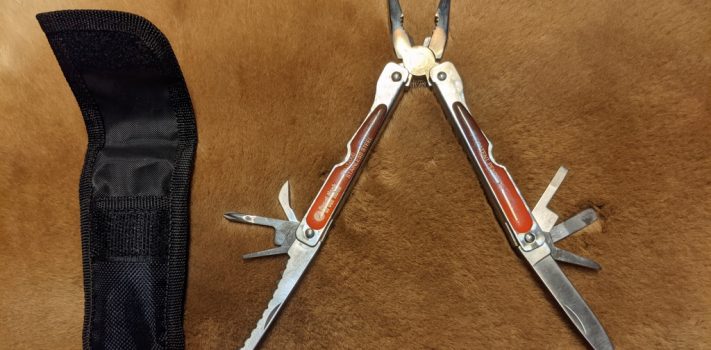I would like to pass along some odd discoveries for your amusement and edification.
Repurposing Surplus Hand Sanitizer
With the advent of Covid, many micro breweries and chemical companies in our area turned their production capacity to making hand sanitizer. They wanted to do their part to help slow the spread of Covid.
No good deed goes unpunished. On December 29, 2020, the FDA notified these companies that they needed to pay a $14,060 Monograph Drug Facility Fee and $9,373 Contract Manufacturing Organization Facility Fee by February 11, 2021. After significant media outcry, the fees were withdrawn. They are a bitter reminder that the first reflex of many bureaucrats is to exploit the suffering of citizens rather than to alleviate that suffering.
When it became increasingly clear that Covid was not easily transmitted by touching infected surfaces, many companies were left with a huge surplus of hand sanitizer. Some of this surplus made its way to our local thrift stores, where at times it was practically being given away.
Recently I was in a thrift store, and noticed several one-quart sized bottles of hand sanitizer on the shelf. They cost one dollar each. I read the label, and discovered that they consisted of 90% alcohol, with the rest of the ingredients consisting of hydrogen peroxide and glycerin. Since I was not in any immediate need of hand sanitizer, I walked on by.
Later in the week, a question came to mind. I wondered if this surplus hand sanitizer could be re-purposed.
I returned to the thrift store a couple of days later to discover that all of the 90% alcohol hand sanitizer was gone. A single, quart-sized bottle of 80% alcohol hand sanitizer remained, at a cost of two dollars. I bought it for testing.
Stove Fuel
My first test was to determine if this hand sanitizer would function effectively as fuel in my Nowegian “Storm Kitchen” alcohol stove.
First I took the stove, and emptied all of the residual denatured alcohol fuel from the reservoir. Next I filled the stove with hand sanitizer, and lit it with a permanent metal match. The stove lit exactly as it does with its regular fuel, and the flame appeared identical.
 Next, I took a dirty steel dog dish, placed approximately a quart of water in the dish, and placed the dish on the stove. I had gotten the dish dirty using it to test the effectiveness of various tinders. My wife was not happy when she found the dish dirty when she recently wanted to give the dog a drink in the barn. I decided that cleaning the dish would be a good use of the hot water produced by testing the hand sanitizer as stove fuel.
Next, I took a dirty steel dog dish, placed approximately a quart of water in the dish, and placed the dish on the stove. I had gotten the dish dirty using it to test the effectiveness of various tinders. My wife was not happy when she found the dish dirty when she recently wanted to give the dog a drink in the barn. I decided that cleaning the dish would be a good use of the hot water produced by testing the hand sanitizer as stove fuel.
Within five minutes, the stove was warmed up and self-pressurizing. Within 20 minutes, the water was boiling vigorously. The boiling loosened the waxy buildup that the tinder testing had created in the bottom of the dish. I put on insulated rubber gloves, extinguished the stove, emptied the hot water from the dog dish, and wiped it out with a paper towel.
There was still some residual dirt on the bottom of the dish, so I tried using some hand sanitizer on paper towel as a solvent to clean the dish. It worked fairly well. Some stubborn carbon remained and needed to be removed with the help of a steel brush.
Overall, I would say that this liquid (non-gel-type) hand sanitizer worked extremely well as fuel in an alcohol stove.
Lighter Fuel
 I also tested the hand sanitizer as fuel for an IMCO lighter. I poured some liquid from the hand sanitizer bottle into a Nalgene drop bottle, and then used the drop bottle to fill the IMCO lighter. When the lighter was full, I returned the excess liquid to the hand sanitizer bottle from the drop bottle.
I also tested the hand sanitizer as fuel for an IMCO lighter. I poured some liquid from the hand sanitizer bottle into a Nalgene drop bottle, and then used the drop bottle to fill the IMCO lighter. When the lighter was full, I returned the excess liquid to the hand sanitizer bottle from the drop bottle.
The lighter ignited readily.
Aftershave Thinner
 I usually thin my aftershave with an equal measure of isopropyl. I do this to reduce the scent, which I find otherwise to be stronger than I desire. This also saves money, since isopropyl is significantly less expensive than aftershave. Since surplus hand sanitizer is even cheaper than isopropyl, I decided to experiment with using it in place of isopropyl to thin aftershave.
I usually thin my aftershave with an equal measure of isopropyl. I do this to reduce the scent, which I find otherwise to be stronger than I desire. This also saves money, since isopropyl is significantly less expensive than aftershave. Since surplus hand sanitizer is even cheaper than isopropyl, I decided to experiment with using it in place of isopropyl to thin aftershave.
I took a bottle, and added equal measures of aftershave and hand sanitizer. I then replaced the cap, shook the bottle, removed the cap, and tested the resulting mixture. It functioned well as an aftershave.
Conclusions
Surplus liquid (non-gel-type) hand sanitizer consisting of at least 80% alcohol can be used as fuel for alcohol stoves and lighters, as a solvent for cleaning objects, and as a thinner to reduce the scent of aftershave. It can also be used as a disinfectant in many applications where isopropyl might otherwise be used, such as cleaning medical thermometers after use. If supplies of surplus hand sanitizer can be obtained at a low price, it can provide a valuable resource for a prepper’s supply shelf.
A Knife
 My wife recently picked up a Great Neck No 12000 Multi-Tool for me at a thrift store for two dollars. I am greatly blessed to have a wife who keeps her eye out for things that I might like while she is out shopping. I don’t believe that this tool is currently available new. It is out of stock at Walmart.com, where its price is listed as $12.90. Various versions of the tool are available used on eBay for prices running between $12 and $25 not including shipping.
My wife recently picked up a Great Neck No 12000 Multi-Tool for me at a thrift store for two dollars. I am greatly blessed to have a wife who keeps her eye out for things that I might like while she is out shopping. I don’t believe that this tool is currently available new. It is out of stock at Walmart.com, where its price is listed as $12.90. Various versions of the tool are available used on eBay for prices running between $12 and $25 not including shipping.
The inclusion of a fish scaler/ruler/hook remover on the tool hints that it was designed for fishermen. Its compact size (about 4″x1″x.5″) is well suited to carry in a tackle box, as is its stainless steel construction.
The version my wife bought is attractively jeweled. (Jeweling, also called engine turning or damascasing, is a process in which a mild abrasive is applied to a metal object in a circular motion to produce a swirling pattern). The tool came with a nylon belt case. I was interested to note that the belt case is appropriately sized to hold a Leatherman Skeletool. Another nice feature is a spring that assists in opening the jaws of the pliers/wire cutters.
In addition to the functions mentioned above, the multi-tool includes a can opener/bottle opener, Phillips screwdriver; small, medium and large slotted screwdrivers, a knife and an awl.
The Walmart.com description says that the knife is “razor sharp”. This is an outrageous lie even by the somewhat elastic standards of marketers. The knife was disappointingly dull when purchased, and even after sharpening was barely adequate. Another drawback was that the various tools do not lock into place when opened, so that there is some danger that they may accidentally close on fingers while in use. Folding the handle closed after opening a tool may reduce this risk somewhat.
The biggest drawback of the tool is that it is made in mainland China.
Overall, the tool is nowhere near the quality of an American-made Leatherman multi-tool. But it does seem well suited to the task of serving as a handy and expendable tackle box tool.
Homemade Eyeglasses Cleaning Solution
Whenever I get a new pair of glasses, the eye doctor gives me a small sample-bottle of eyeglass cleaning solution. Since I often clean my glasses in the sink with soap and hot water, a small bottle of cleaning solution is usually enough to last me a long time.
My current prescription has remained unchanged for longer than the usual time. As a result, I recently noticed that I was running low on eyeglass cleaning solution.
A simple answer to that problem would be to buy more. A quick search of the Internet revealed that an 8-ounce bottle typically costs somewhere around three dollars, giving a unit cost of 38 cents per ounce, or almost $50 a gallon.
A quick search online revealed a number of recipes for homemade eyeglass cleaning solution. Typical ingredients included isopropyl, white vinegar, water, and dishwashing detergent in varying combinations and varying amounts. After due consideration, I decided to go with a combination of one part isopropyl, one part white vinegar, one part filtered water, and just a hint (a very small drop) of dishwashing detergent.
I gathered my empty and partly empty bottles of cleaning solution. I discovered that I had three bottles, each of which could hold one ounce. Two of the bottles were about 1/3 full. I mixed about ½ ounce isopropyl, ½ ounce white vinegar, and ½ ounce filtered water with the left over solution in the partial bottles. When I went to the kitchen sink to add a drop of dishwashing detergent, I accidentally spilled the solution I was preparing and needed to start over.
For the second attempt, I mixed 1 ounce isopropyl with 1 ounce white vinegar, 1 ounce of filtered water, and one drop of dishwashing detergent. I stirred the mixture in a measuring cup with a plastic fork, and then filled each of the one ounce spray bottles.
Following a tip that was provided with several of the recipes, I sprayed the cleaning solution on a cleaning cloth rather than directly on the eyeglasses. I was very pleased with the results.
Doing a cost estimate for the homemade solution was difficult because I found that the cost of isopropyl and white vinegar varies widely. I finally decided that the current Walmart price seemed fairly typical, so I chose it as my standard. There, 32 ounces of isopropyl were listed at $3.92, and a gallon of white vinegar was listed at $5.92, giving unit prices of $.12 and $.05 respectively. The water and small amount of dishwashing detergent used were virtually free, giving a unit total for the complete mixture of approximately $.06 per ounce or about $7.68 per gallon. Even allowing for spillage, this compares very favorably with the roughly $50 a gallon for the commercial product. The homemade product seems to work even better than the samples that I was previously using. I highly recommend it.
Disclaimer
I did not receive any financial or other inducements to mention any vendor, product, or service in this article.










